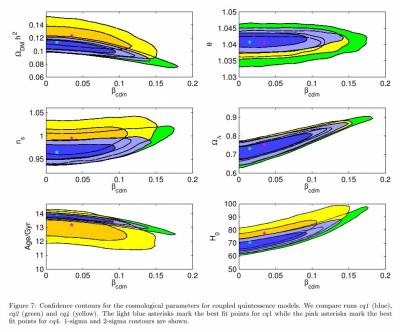Dark Energy and Modified Gravity

Dark Energy is the enigmatic cause of the acceleration of the cosmic expansion. Since the discovery of acceleration in 1998, scientists are trying to understand the nature of the substance that drives the cosmic kinematics. The cosmological constant introduced by Einstein in 1917 is a possible explanation, but many others are still observationally acceptable. Among these, there are models that modify gravity, or that depend on extra-dimensional physics, or are based on large-scale deviations from homogeneity.
Our group was involved in the coordination of the ESA Planck paper on dark energy and modified gravity for the 2015 release. This includes a systematic analysis of models, codes, data, tested against Planck CMB data and in combination with external data sets.
To improve our understanding of the properties of dark energy several other experiments are planned or under way. Perhaps the most ambitious is the ESA Euclid satellite, to be launched in 2020, in which several members of our institute are involved.
The ITP Cosmology group works on several models of dark energy and tries to predict their theoretical and observational properties and how well Euclid will be able to discriminate among them.
Among the theories actively investigated in our group, we mention models in which dark energy couples to neutrinos, is present since early times, is due to massive gravitons, or even induces an inversion of the cosmic expansion.
We have also worked on Horndeski models of modified gravity and looked at their impact on both the primordial and lensing B mode polarization of the CMB .